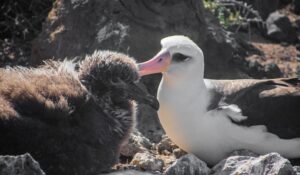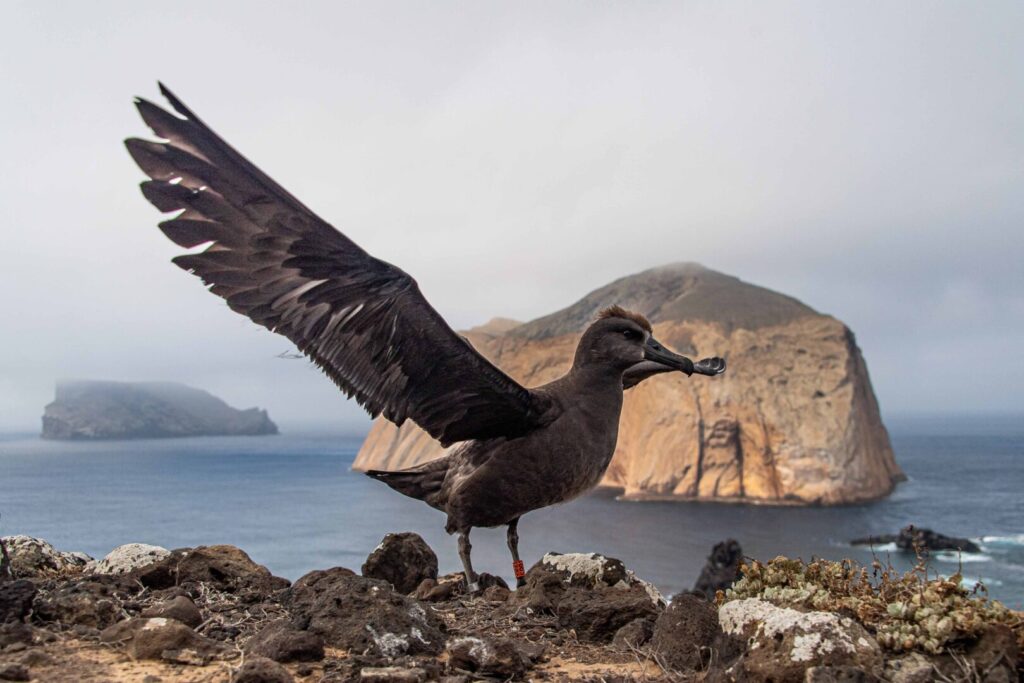The U.S.-Mexico Binational Project for the black-footed albatross translocation from Midway Atoll to the Guadalupe Island Biosphere Reserve concluded its third year successfully, as the nesting colony grew with 32 chicks hatching between January and July.
According to the National Commission of Natural Protected Areas (Comisión Nacional de Áreas Naturales Protegidas) (Conanp), this is a project where both countries join their efforts to save this species of seabird from the impacts of the climate change.
"The chicks and eggs transported from Midway Atoll to Guadalupe Island are rescued from imminent death due to the flooding of their nests by the increase and intensity of storms and sea level rise, especially due to the low altitude of these Hawaiian islands where their main nesting colonies are located," reports the Mexican agency.
Since 2021, 93 chicks have been raised with an average reproductive success greater than 90%, similar to the wild population of Laysan albatrosses on Guadalupe Island and to that of black-footed albatross translocation projects on Oahu Island in Hawaii, Conanp notes.

For its part, Island Ecology and Conservation Group indicates that 2024 will mark the fourth year of this project, which is expected to reach between 120 and 125 chicks hatched in the Guadeloupe Island. More than half of these individuals are expected to return to the island, first to prospect and look for mates between 3 and 5 years of age, and then to reproduce between 6 and 9 years of age.
This project is a pioneer at the international level as it is the first of its kind in which two countries join forces to save a seabird species from the impacts of global climate change. Governmental institutions and environmental organizations from the United States and Mexico are collaborating.
Source: Conanp, Island Conservation


